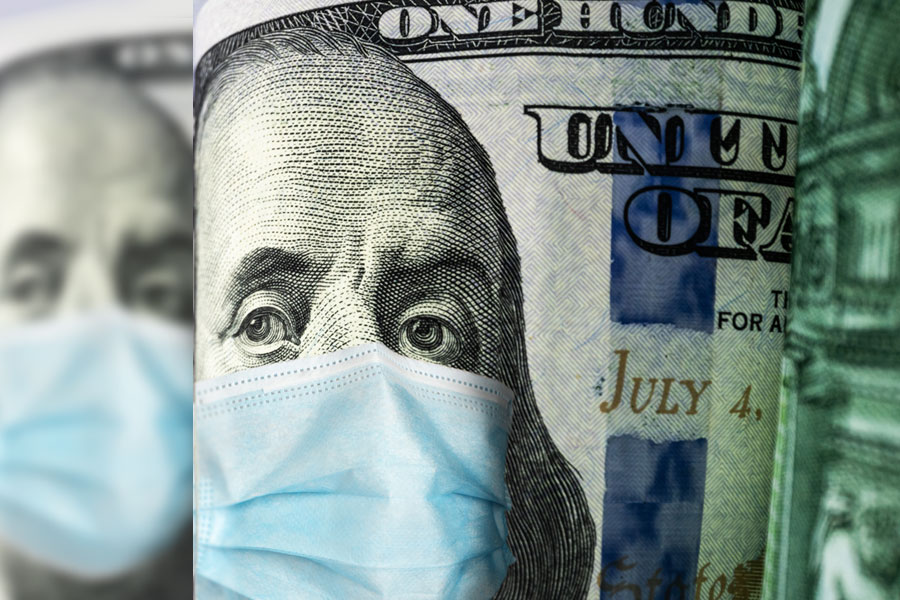November 12, 2020
Impact of COVID-19 on Property and Liability Insurance

While estimates vary, the insurance industry is currently expected to pay as much as $110 billion in claims related to the pandemic in 2020, according to Lloyd’s.
“The coronavirus outbreak has reduced risk in some areas while, at the same time, changing and heightening it in others,” according to Chief Claims Officer Thomas Sepp of Allianz Global Corporate & Specialty (AGCS) in a company news release.
“We have seen claims in some lines of business, such as entertainment insurance, surge during Covid-19, while traditional property and liability claims have been subdued during lockdown periods,” said AGCS Global Head of Claims Philipp Cremer. “There is still the potential for claims to occur as factories and businesses restart after periods of hibernation.” It will also take time for third-party liability claims to develop.
“The growing reliance on technology, shift to remote working, reduction in air travel, expansion of green energy and infrastructure and a rethinking of global supply chains will all shape future loss trends for companies and their insurers,” said AGCS’s Shepp.
AGCS has released a report identifying the impact of the pandemic on claims trends in different lines of insurance. The following are some highlights:
Property/Business Interruption
Property damage claims have not been significantly impacted by Covid-19. However, as production lines restart, there is greater risk of machinery breakdown and damage and even fire and explosion. Covid-19 has prompted many business interruption (BI) claims, which have become controversial and may or may not be covered. In addition, on one hand, factories in hibernation will not produce large BI claims. On the other hand, lockdowns can lead to longer and more costly disruptions as restrictions prevent effective loss mitigation.
Liability
There are have been few liability claims to date, in part because such claims tend to lag in when they are reported. However, according to Sepp, “A number of outbreaks of coronavirus have been linked to gyms, casinos, care homes, cruise ships or food/meat processing plants.”
Directors & Officers
Insolvencies, as well as event-driven litigation, could be potential sources of D&O claims. To date, there has been only a small number of securities class action lawsuits related to Covid-19 in the U.S. The pandemic could trigger further litigation if it is perceived that boards failed to prepare adequately for a pandemic.
Cyber Risks
Cyber risk exposures have heightened, with reports of the number of ransomware and business email compromise attacks increasing. Work from home has exacerbated these developments.
Claims
According to AGCS, claims notifications from motor accidents, slips and falls or workplace injuries slowed as more people stayed at home, and with the temporary closure of many shops, airports and businesses during lockdowns across the world. AGCS said it noticed a positive impact on U.S. claims settlement from the suspension of courts and trials. Some claimants and plaintiffs have been more open to negotiating settlements out of court rather than opting to wait a long time until their case is scheduled. In general, claims activity is likely to pick up again following resumption of economic activity, the insurer predicts.
Covid-19 has also reinforced the need for digitalization of claims handling. Remote claims inspections and assessments for tornados, floods or major industry accidents are now possible through satellite, drone or image capture technology and tools such as MirrorMe.
“Just a few years ago, claims processes were mostly manual and paper-based and many people could not have imagined handling claims remotely,” says Cremer.
Long-Term Trends
According to the report, Covid-19 is accelerating trends such as a growing reliance on technology and rising awareness of the vulnerabilities of complex global supply chains. Going forward, many businesses are expected to review and change their supply chains to build in more resilience. This could involve some reshoring of critical production areas because of disruption caused by the pandemic. Such a move would likely impact frequency of claims and the costs of any future business interruptions.
Meanwhile, the growth of remote working means that companies may have lower property assets and fewer employees on site in the future, but there would be corresponding changes in workers’ compensation and cyber risks.
